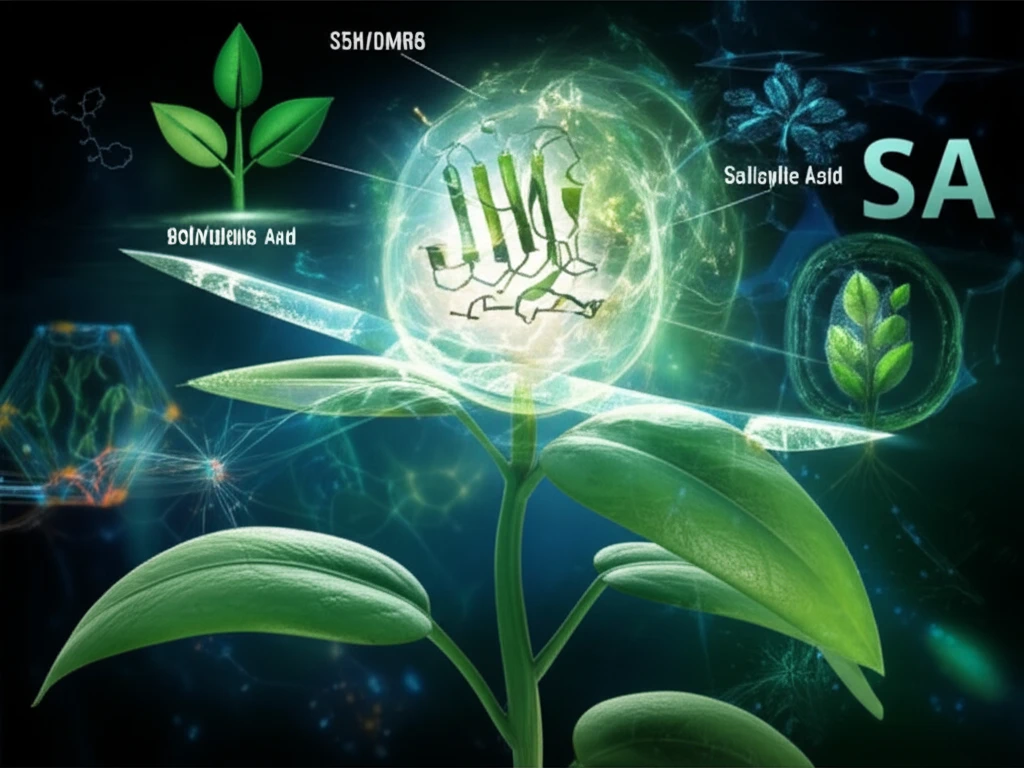
Decoding Plant Defense: How a Newly Discovered Enzyme Fine-Tunes Immunity
"Scientists uncover the crucial role of S5H/DMR6 in regulating salicylic acid, offering new strategies for enhancing plant health and resilience."
Plants, like humans, have sophisticated defense systems to ward off diseases and environmental stressors. A key player in plant immunity is salicylic acid (SA), a hormone that triggers defense responses. However, maintaining the right level of SA is crucial; too much or too little can disrupt plant development and health. Understanding how plants fine-tune SA levels is a hot topic in plant biology.
For years, scientists have been working to unravel the complex mechanisms that control SA homeostasis. Two major pathways contribute to SA production: the phenylalanine ammonia lyase (PAL) pathway and the isochorismate synthase (IC) pathway. While these pathways explain how SA is made, the processes that break down or modify SA are equally important for maintaining balance. One such modification involves the addition of a hydroxyl group (hydroxylation) to SA, leading to the formation of compounds like 2,5-dihydroxybenzoic acid (2,5-DHBA).
Recent research has shed light on a previously mysterious enzyme, S5H/DMR6, which plays a critical role in this hydroxylation process. By identifying S5H/DMR6 as a salicylic acid 5-hydroxylase, scientists have opened new avenues for understanding and manipulating plant immunity. This article explores the discovery of S5H/DMR6, its function in regulating SA, and its potential implications for improving plant health.
S5H/DMR6: The Master Regulator of Salicylic Acid

The study pinpoints S5H/DMR6 as a key enzyme responsible for converting SA into 2,5-DHBA. This conversion is a critical step in SA catabolism, effectively reducing the amount of active SA in the plant. Researchers found that S5H/DMR6 directly hydroxylates SA at the C5 position of its phenyl ring. In test tube experiments, S5H/DMR6 showed a high level of specificity for SA, efficiently converting it to 2,5-DHBA.
- Reduced growth size
- Early senescence (premature aging)
- Increased resistance to certain pathogens, such as Pseudomonas syringae
Unlocking New Strategies for Plant Protection
The discovery of S5H/DMR6 as a key regulator of SA homeostasis has significant implications for plant biotechnology and crop improvement. By understanding how this enzyme functions, scientists can develop new strategies to enhance plant immunity and resilience.
One potential application is to engineer crops with optimized S5H/DMR6 activity. This could involve:
<ul><li>Overexpressing the S5H/DMR6 gene to reduce SA levels and prevent over activation of defense responses, which can sometimes hinder growth.</li><li>Modulating S5H/DMR6 expression to fine-tune SA levels in response to specific pathogens or environmental stresses.</li></ul>
